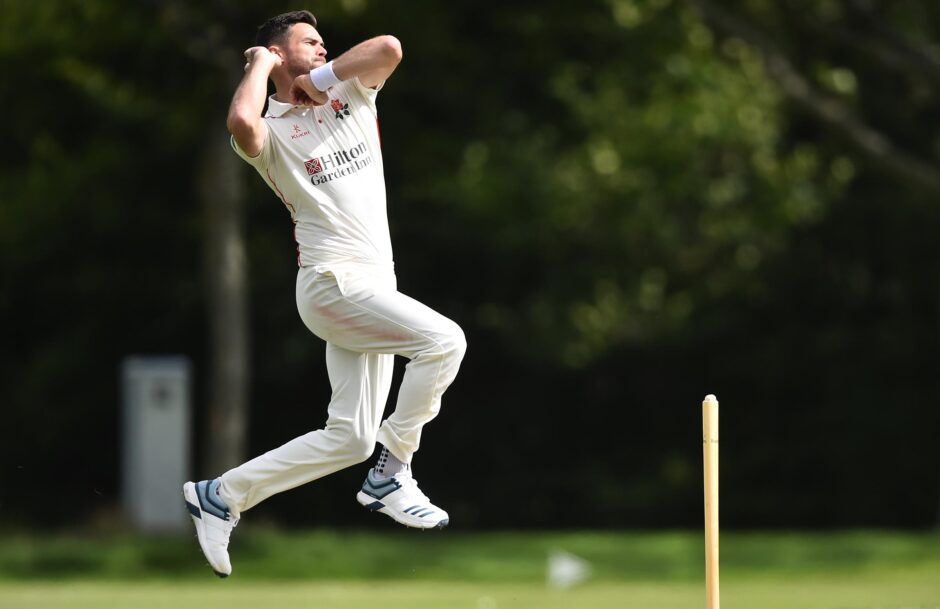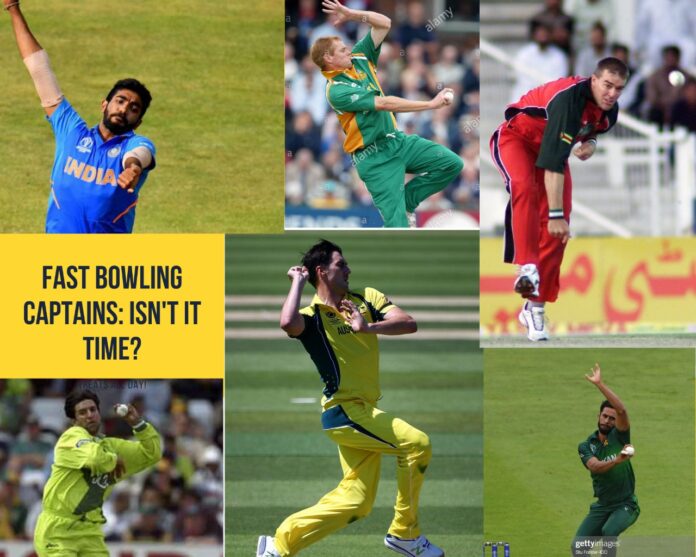Here’s some flawless opinion from Nirajan Khadka.
There aren’t a lot of bowler captains around the world, are there? Let alone a fast bowling captain. A single look at the list of international or even franchise team captains can back this statement.
It is rare for a bowler to captain a cricket team, always has been. However, this rarity has only multiplied in recent times. Out of the 10 test-playing nations, none are captained by a bowler currently. Even in the recently canceled IPL, no captain was a bowler. None. Isn’t that a bit off? Cricket is called a contest between bat and ball. There should be an equal say of both disciplines in a game you might believe if you were recently introduced to this game that I adore.
But if you know the game and have analyzed it even on a small scale, you know that it has become a batsman’s game. No, I am not salty as a person who has always loved the art of bowling (especially fast bowling), but it is the truth. We all love to see sixes and fours, 350+ runs in ODIs, and massive run chases. Bowlers in the era of T20 cricket and more and more batsman-friendly pitches and rules are second fiddles to the mega superstar batsmen.
Yes, there will always be exceptions in the form of Pat Cummins, Rashid Khan, Jasprit Bumrah, and some others. But there is a reason they’re exceptions, they are too few and far between.
Now I should probably end this tangent I am going on about how batsmen are favored in cricket and focus on the question at hand. Fast bowling captains, where are they? And how did they become this rare phenomenon and a serious topic of discussion in recent times?
So, a year and a half or so ago the debate started on Pat Cummins’ chances of replacing Tim Paine as the captain of the Australian team. As the vice-captain and also a popular member among the teammates, he was touted as a candidate to replace Paine if that shall be required.
This discussion on his chances shed a light on a thing overlooked by cricket fans around the world, the lack of fast bowling captains in world cricket. This piqued interest around my circle and it was more or less unanimously agreed that there should be more fast bowling captains. In recent times there haven’t been many quicks who took charge of national teams. Mashrafe Mortaza, Jason Holder (whom in all fairness is a genuine all-rounder), Lasith Malinga, and Stuart Broad (in T20Is when England had three captains, one for each format) are a select few who were given the full-time job of captaincy.
In the past, the list of fast bowling captains includes greats like Wasim Akram, Waqar Younis, Courtney Walsh, Heath Streak, Bob Willis, and more. They not only were great fast bowlers but also proved themselves to be good leaders.
If we are to include all-rounders who were primarily fast bowlers the people like Imran Khan, Kapil Dev, and Shaun Pollock come to mind right off the bat. These great fast bowlers led their teams with great distinction and cherished as titans of cricketing leadership.
They say future generations first stand on the shoulders of the giant to see ahead, then they later take up the mantle from these giants. But, in the case of fast bowling captains, this has not been the case. The legacy created by these giants has not found its successors.
Before giving light to the readers with some numbers that could be associated with the fast bowling captains, I found something quite interesting to share. It was written by Sahil Jain in www.sportskeeda.com that was found published in the book of former England captain, Mike Bearley “The Art of Captaincy” that fast bowlers need to be the last option as far as captaincy is concerned.
Further when I researched the numbers that few of the captains around the world whom I consider to be bowlers first rather than all-rounders, I led to some pretty numbers from Sports Keeda.
Heath Streak led Zimbabwe to 4 out of 11 wins and 18 ODI wins as captain. Similarly, Imran Khan-led Pakistan to 14 Test victories out of 48 Test matches and 75 out of 139 in ODIs. Mashrafe Mortaza led Bangladesh to their first overseas Test win in the West Indies and won 26 out of 43 ODI matches for Bangladesh.
Wasim Akram led Pakistan to 12 wins out of 25 Test matches and 66 wins out of 109 ODIs. At last but not least, Shaun Pollock led South Africa for 14 wins in his reign of 26 Tests as captain.
Likewise, Pollock led his country to 59 wins in 92 ODIs as captain. The list might go on and on but it clearly shows that fast bowlers as captain were pretty good number-wise.
Let us address the elephant in the room first. The valid reasons were given by selectors and experts for not making fast bowlers as captains. The first is career longevity and injuries. Fast bowlers are more prone to injuries than batsmen and wicketkeepers or even spin bowlers. Batsmen tend to have longer and more injury-free careers as a whole barring some exceptions.
Similarly, in relation to bowlers, batsmen require less rest period during a long series. Having to rest your captain in the middle of a series can cause an imbalance in a team. Another reason for not selecting a bowling captain may be the perception that bowlers will have greater pressure on the field if they are chosen as skippers. When a team is bowling, a batsman captain can solely focus on the field settings and bowling combinations.
However, a bowler, along with the burden of captaincy, also has to focus on his own workload and bowling plans. These are few arguments provided against fast bowling captains. However, these arguments are slowly changing and stronger reasons are arising to try fast bowlers as captains again.
The beliefs of the aforementioned nature are slowly fading away. Technology and sports science have come a long way in the last fifteen to twenty years. The longevity and injury concerns of bowlers are rarer than they used to be. Take the ever-youthful Jimmy Anderson for example. Yes, these days he is rested for half of the games, but you can’t expect a thirty-eight-year-old to keep up to his prime.

Stuart Broad, Josh Hazlewood, Pat Cummins since his comeback, Jason Holder, Trent Boult, Chris Woakes and others are an example of new-age fit bowlers capable of playing almost all of the games. The rehabilitation and recuperating time for players has been drastically reduced.
The long setbacks are becoming fewer and farther. Now when it comes to the argument of extra added pressure to the bowling captain, it isn’t as strong as it used to be.
Batsmen while batting has great pressure of batting and captaincy just like their bowling counterparts. And unlike bowlers, the batsmen don’t have many chances to recover in their main field which is batting. So, a mistake that led to a batting captain getting out on a duck can linger on his mind during the whole match.
Bowler always has the luxury of trying over more or using other options. In this modern age where match analysis is a vital part of the management team, the players aren’t burdened with coming with all the tactics. This reduces the mental burden and helps enhance a player’s decision-making ability.
In my opinion, the most important reason why fast bowlers should be entrusted with captaincy is one of the defining traits of a good captain. Resilience. A good captain requires grit and determination. And fast bowlers are a true example of determination and resilience in cricket.
Who is stupid enough to run in hard and bowl thirty overs on a dead third day Chennai pitch in forty-five-degree Celsius heat? Yes, fast bowlers. They have all the grit and fortitude required to be a good captain and then some. Cricket, especially international cricket, requires a resilient attitude for a captain to succeed. Fickle-natured and easily fazed captains come, try and fail. Test cricket will chew, grind and spit them out. So, fast bowlers, more than anyone are capable of making a great captain.
In today’s game, I believe a few bowlers are fit to make a very good captain. Aforementioned Pat Cummins, is an easy choice. His heart and also his decision making are all there to see. As a bowler, his tactical nuance is always top notch which he can translate to good captaincy.
Along with Cummins, Jasprit Bumrah, Hasan Ali, Suranga Lakmal, Chris Woakes and Tim Southee can become good captains. And once the international stage sets examples like the old times, slowly the renaissance of fast bowling captains will begin. Domestic level will also follow suit and slowly the legacy of the fast bowler who captained their teams and wrote their names with golden embers in history will be restored.
I hope someday, we will see two fast bowlers coming out for the toss on the world stage. Someday, kids who love fast bowling would realize their dream of captaining their country. Someday, I hope bat and bowl will be equal again. And we call can fall in love with this great game once again.
There’s a fitting end to the topic as the fast bowler bowling the beauty of the deliveries to complete his spell or quota as put forward by Srinivas S in www.thefulltoss.com mentioned that the bias of the game is rather puzzling between picking a batsmen captain and a bowling captain though, given that on-field captaincy is principally a bowling job, as endorsed by cricketing truisms such as “You need twenty wickets to win a Test match” and “wickets matter regardless of the format”.







